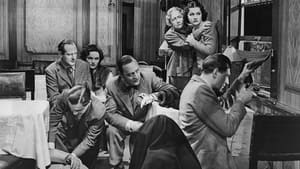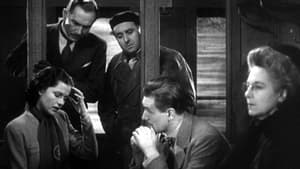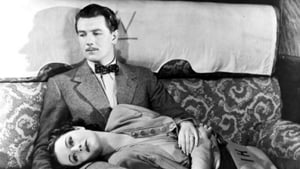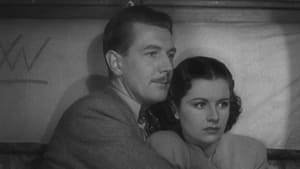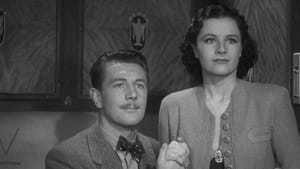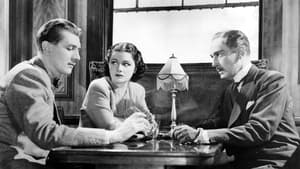Contact: [email protected]
Video Sources 0 Views
- Watch trailer
- The Lady Vanishes


Synopsis
Table of Contents
ToggleReview: The Lady Vanishes (1938) – A Classic Mystery Thriller Enhanced by Early Colorization

Introduction
“The Lady Vanishes” (1938) is a gripping mystery thriller that has captivated audiences for generations with its suspenseful plot and memorable characters. In this review, we’ll explore the significance of this early colored version of the film, delving into its impact on the genre and its enduring legacy in the world of cinema.
Check The Full Colorized Movies List
Check Our Colorized Movies Trailer Channel
Understanding The Lady Vanishes 1938: Director, Cast, and Genre
Directed by the legendary Alfred Hitchcock, “The Lady Vanishes” (1938) showcases his mastery of suspense and intrigue. The film boasts a talented ensemble cast, including Margaret Lockwood, Michael Redgrave, and Dame May Whitty, whose performances bring the story to life with authenticity and depth. Blending elements of mystery, thriller, and comedy, “The Lady Vanishes” (1938) transports viewers to a world of espionage and danger, where nothing is as it seems.
Exploring the World of The Lady Vanishes 1938: Plot and Characters
At its core, “The Lady Vanishes” (1938) follows the journey of a young woman, played by Margaret Lockwood, who becomes embroiled in a sinister conspiracy aboard a train traveling through Europe. When an elderly woman mysteriously disappears from the train, she teams up with a charming stranger, portrayed by Michael Redgrave, to unravel the truth behind her disappearance. Along the way, they encounter a colorful cast of characters, each with their own secrets and motivations, leading to a thrilling climax that keeps audiences on the edge of their seats.
The Art of Film Colorization
Film colorization has long been a controversial topic in the world of cinema, with purists arguing that it detracts from the artistic integrity of classic films. However, when done tastefully and with respect for the original work, colorization can breathe new life into beloved movies, offering viewers a fresh perspective on familiar stories and enhancing the visual experience.
Early Colored Films: A Brief History
The history of colored films dates back to the early days of cinema, with filmmakers experimenting with various techniques to add color to their creations. From hand-tinted frames to early Technicolor processes, the evolution of colored film has been marked by innovation and experimentation, paving the way for the development of modern colorization techniques that continue to captivate audiences to this day.
The Lady Vanishes 1938 and Its Early Colored Version
The decision to release “The Lady Vanishes” (1938) in a colorized format was met with both excitement and apprehension. While some welcomed the opportunity to experience the film in vibrant color, others expressed concerns about the potential impact on its visual aesthetic. Nevertheless, the early colored version of “The Lady Vanishes” (1938) offers viewers a fresh perspective on Hitchcock’s classic thriller, enhancing its atmospheric qualities and immersing audiences in its world of mystery and intrigue.
The Debate Over Film Colorization
The debate over film colorization is a complex and multifaceted issue, with passionate arguments on both sides of the divide. Proponents argue that colorization revitalizes classic movies for modern audiences, breathing new life into timeless stories and introducing them to a new generation of viewers. Conversely, detractors maintain that colorization detracts from the authenticity of the original work, altering the director’s artistic intent and diminishing the historical significance of the film.
Examining The Lady Vanishes 1938 as an Early Colored Film
As with any colorized classic, the impact of colorization on “The Lady Vanishes” (1938) is a matter of personal interpretation. Some may argue that it enhances the film’s visual appeal and immerses viewers in its world, while others may feel that it detracts from the stark beauty of the original black and white version. Regardless of one’s stance on the issue, there’s no denying the enduring power of “The Lady Vanishes” (1938) as a masterful thriller that continues to captivate audiences with its suspenseful plot and memorable characters.
Influence and Legacy: The Lady Vanishes 1938’s Impact on Cinema
“The Lady Vanishes” (1938) has left an indelible mark on the world of cinema, inspiring countless filmmakers and captivating audiences with its suspenseful plot and atmospheric cinematography. From its unforgettable performances to its gripping storyline, the film continues to resonate with viewers of all ages, reaffirming its status as a timeless classic of the mystery thriller genre.
Director’s Cinematic Legacy: Beyond The Lady Vanishes 1938
Alfred Hitchcock’s influence extends far beyond “The Lady Vanishes” (1938), with a vast body of work that continues to captivate audiences around the globe. From “Psycho” to “Vertigo,” Hitchcock’s films are celebrated for their masterful storytelling, innovative techniques, and psychological depth, solidifying his legacy as one of the greatest directors in cinematic history. Through his groundbreaking work, Hitchcock has left an indelible imprint on the world of cinema, inspiring generations of filmmakers to follow in his footsteps.
Themes Explored in The Lady Vanishes 1938
“The Lady Vanishes” (1938) explores a myriad of themes, from the nature of truth and deception to the resilience of the human spirit in the face of adversity. Through its richly drawn characters and intricate plot twists, the film invites viewers to ponder the mysteries of human nature and the fragility of perception. As audiences delve into the world of “The Lady Vanishes” (1938), they are drawn into a web of intrigue and suspense that keeps them guessing until the very end.
Reception and Controversy Surrounding The Lady Vanishes 1938
Upon its release, “The Lady Vanishes” (1938) received widespread critical acclaim, with many praising its suspenseful plot, atmospheric cinematography, and memorable performances. However, the decision to release the film in a colorized format sparked debate among purists, reigniting the age-old discussion surrounding film preservation and artistic integrity. Despite the controversy, “The Lady Vanishes” (1938) remains a beloved classic that continues to captivate audiences with its timeless appeal and enduring legacy.
Where to Watch The Lady Vanishes 1938 Online
For those eager to experience the timeless magic of “The Lady Vanishes” (1938), the film is readily available on popular streaming platforms such as Netflix, Amazon Prime, and Hulu. Whether you choose to watch it in its original black and white format or the early colored version, “The Lady Vanishes” (1938) promises to transport you to a world of mystery and suspense, where nothing is as it seems and danger lurks around every corner.
FAQs About The Lady Vanishes 1938
Q: Is “The Lady Vanishes” (1938) based on a true story? A: No, “The Lady Vanishes” (1938) is a fictional tale crafted by screenwriters Sidney Gilliat and Frank Launder, inspired by Ethel Lina White’s novel “The Wheel Spins.”
Q: Who are the main actors in “The Lady Vanishes” (1938)? A: “The Lady Vanishes” (1938) features a talented ensemble cast, including Margaret Lockwood, Michael Redgrave, and Dame May Whitty, whose performances bring the story to life with authenticity and depth.
Q: What awards did “The Lady Vanishes” (1938) win? A: While “The Lady Vanishes” (1938) did not win any major awards, it received critical acclaim for its suspenseful plot, atmospheric cinematography, and memorable performances.
Q: Why was “The Lady Vanishes” (1938) released in a colorized format? A: The decision to release “The Lady Vanishes” (1938) in color was made to introduce the film to a new generation of viewers and enhance its visual appeal for modern audiences. While the choice to colorize the film sparked debate among purists, it ultimately allowed “The Lady Vanishes” (1938) to reach a wider audience and ensure its continued relevance in the annals of cinematic history.
Conclusion
As we reflect on the enduring legacy of “The Lady Vanishes” (1938), let us celebrate its status as a timeless classic that continues to captivate audiences with its suspenseful plot, memorable characters, and atmospheric cinematography. Whether viewed in its original black and white format or the early colored version, “The Lady Vanishes” (1938) remains a shining example of Alfred Hitchcock’s mastery of suspense and intrigue, reaffirming its place in the pantheon of great cinema.
